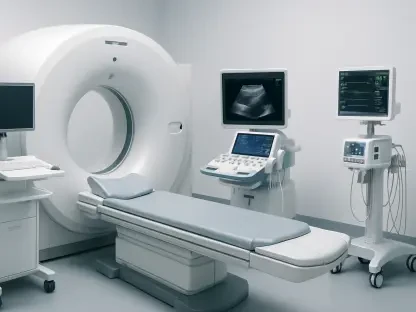In a nation where access to quality healthcare remains a persistent challenge for millions, a new legislative effort in the Nigerian Senate has sparked hope for systemic change, potentially marking a turning point for the country’s healthcare framework. The University Teaching Hospitals (Reconstitution of Boards, etc.) Act (Amendment) Bill, known as SB. 908, recently passed its first reading. Sponsored by Senator Abba Patrick Moro of Benue South, this bill seeks to overhaul the governance and infrastructure of university teaching hospitals, institutions critical to both medical education and patient care. With a focus on modernizing outdated systems established decades ago, the proposed amendments aim to address the pressing demands of a growing population and an evolving medical landscape. This development raises a pivotal question: can this legislative push truly reshape the way healthcare is delivered and managed across Nigeria, or will it face the same hurdles that have stalled past reforms?
Addressing Infrastructure Gaps in Healthcare
The urgent need for expanded healthcare infrastructure in Nigeria stands as a core focus of SB. 908, with provisions that could significantly alter the distribution of resources. One of the bill’s key proposals involves updating the legal framework to include additional university teaching hospitals in various regions. Such an expansion would directly tackle the issue of limited access to quality care, particularly in underserved areas where medical facilities are scarce. By integrating new hospitals into the system, the legislation aims to ensure that more communities benefit from advanced medical services while also creating opportunities for localized training and research. This move is seen as a vital step toward reducing disparities in healthcare access, as many regions currently lack the facilities needed to meet even basic health demands. If implemented effectively, this could mark a substantial improvement in how healthcare reaches the population.
Beyond simply increasing the number of facilities, the bill emphasizes the importance of strategic planning to support these new institutions. Ensuring that newly established teaching hospitals are equipped with modern tools and adequate staffing is critical to their success. The legislation appears to recognize that without proper funding and resource allocation, expansion efforts risk becoming hollow promises. Additionally, fostering environments where medical students can train in diverse settings could enhance the quality of education and prepare professionals to address community-specific health challenges. However, skepticism remains about whether the government can sustain the financial and logistical demands of such growth. Past initiatives have often faltered due to inadequate follow-through, and stakeholders are keenly aware that success hinges on a clear, actionable roadmap for implementation. The potential is undeniable, but so are the challenges that lie ahead in bridging these infrastructure gaps.
Reforming Hospital Governance for Better Outcomes
Another cornerstone of SB. 908 lies in its push to redefine the management structure of university teaching hospitals, aiming for a more inclusive and efficient system. Historically, leadership roles such as the Chief Medical Director have been predominantly held by medical doctors, often sidelining other qualified healthcare professionals. The proposed amendments seek to broaden eligibility criteria, allowing pharmacists, nurses, and laboratory scientists to take on key administrative positions. This shift is intended to dismantle long-standing professional hierarchies and foster a collaborative approach to hospital governance. By drawing on diverse expertise, the bill envisions decision-making processes that are more holistic and reflective of the multifaceted nature of healthcare delivery. Such inclusivity could lead to improved accountability and innovation in how hospitals operate on a day-to-day basis.
While the concept of inclusive leadership holds promise, it also introduces complexities that must be carefully navigated to avoid unintended consequences. The bill underscores the necessity of establishing stringent qualifications for all leadership roles, regardless of professional background, to maintain high standards of administration. Without clear guidelines, there’s a risk that broadening eligibility might compromise the expertise needed to manage complex healthcare institutions. Moreover, transitioning to this new model could stir tensions among professionals accustomed to traditional structures, potentially slowing down the reform process. The emphasis must be on training and capacity-building to ensure that all individuals stepping into governance roles are well-prepared. Balancing inclusivity with competence will be crucial for this aspect of the legislation to yield tangible improvements in patient care and operational efficiency across teaching hospitals.
Modernizing Healthcare Through Legislative Vision
SB. 908 represents a broader recognition of the need to adapt Nigeria’s healthcare system to contemporary challenges, reflecting a progressive stance on reform. The dual focus on infrastructure expansion and governance restructuring highlights an understanding that systemic change requires a multifaceted approach. By advocating for the integration of diverse professionals into leadership roles, the bill aligns with global trends that prioritize collaboration over rigid, physician-centric models. This shift could cultivate a culture of shared responsibility, where varied perspectives contribute to more effective problem-solving in high-stakes environments. Furthermore, the potential addition of teaching hospitals addresses the immediate need for physical resources to keep pace with population growth and regional disparities, offering a practical solution to long-standing issues of access and equity in healthcare delivery.
Yet, the path to modernization is not without its hurdles, and the bill’s success will depend on meticulous execution and sustained commitment from all stakeholders. Critics argue that while the intentions behind the legislation are commendable, the real test lies in translating these proposals into measurable outcomes. Historical precedents of healthcare reforms in Nigeria often reveal a gap between policy and practice, with funding shortages and bureaucratic delays frequently derailing progress. To counter this, the bill must be accompanied by robust mechanisms for monitoring and evaluation, ensuring that both new hospitals and restructured management systems operate as intended. The cautious optimism surrounding this legislative effort reflects a collective hope for transformation, tempered by the reality of systemic challenges that have persisted for decades. Only through deliberate and coordinated efforts can this vision for a modernized healthcare system come to fruition.
Paving the Way for Sustainable Progress
Reflecting on the journey of SB. 908 through its initial reading in the Senate, it became evident that this bill captured a critical moment of opportunity for Nigeria’s healthcare landscape. Its passage marked a bold acknowledgment of deep-rooted issues, from inadequate facilities to outdated governance models, and set a precedent for addressing them through thoughtful reform. The discussions surrounding infrastructure growth and inclusive leadership revealed a shared aspiration to build a system that serves all citizens more equitably. Looking back, the cautious hope that defined early reactions underscored the importance of balancing ambition with pragmatism in legislative efforts.
Moving forward, the focus shifted to actionable strategies that could sustain the momentum of these reforms. Establishing clear funding frameworks and timelines for hospital expansions emerged as a priority to prevent delays. Simultaneously, developing comprehensive training programs for diverse leadership candidates was deemed essential to uphold administrative quality. Engaging stakeholders across the healthcare sector to build consensus and address potential resistance also stood out as a vital step. Ultimately, the legacy of this bill rested on the ability to turn legislative intent into lasting impact, ensuring that the promise of better care and education became a reality for future generations.









